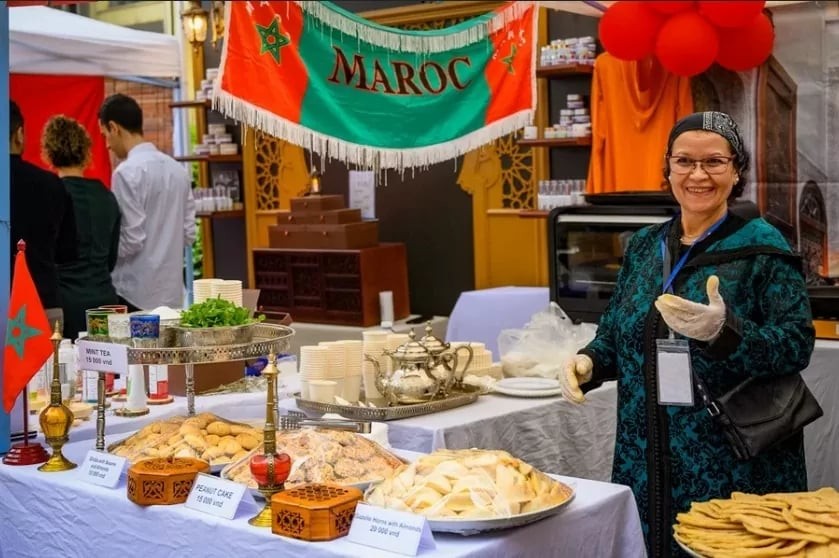Around The World: Discover The Most Significant Dishes You Can Have
1. Kebab, Turkey
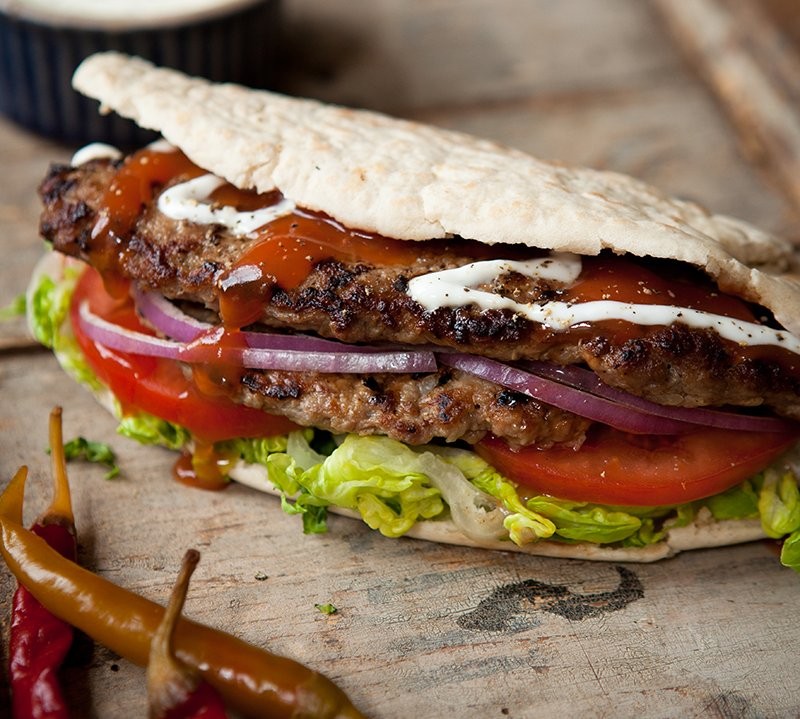 |
| Photo: Getty Images |
Kebab is a cooked meat dish, with its origins in Middle Eastern cuisines. Many variants are popular around the world.
The word “kebab” is Turkish for “grilled meat.” The most familiar form of kebab for many people is the shish kebab, made with meat which is cut into chunks and lightly seasoned before being skewered. Many people also like to add vegetable chunks to their shish kebabs, such as onions, peppers, squash, and mushrooms. It is also possible to find kebabs made with long strips of meat, along with doner kebabs, made by grinding meat, forming it into a cylinder around a skewer, and slow-roasting it. In India, people eat kathi kebab, a form of kebab cooked in a tandoor oven.
Kebabs can be eaten as street food, often paired with a flatbread, and they may also be served over rice, lentils, and other foods. An assortment of sauces can be used to dress kebabs, depending on regional tastes. Tangy yogurt sauces, tahini-based sauces, savory chutneys, and spicy pepper sauces are all fairly common in the Middle East, and some cooks get more adventurous with things like peanut sauce, coriander chutney, or even slightly sweet sauces such as fruit chutneys.
2. Falafel, Middle East
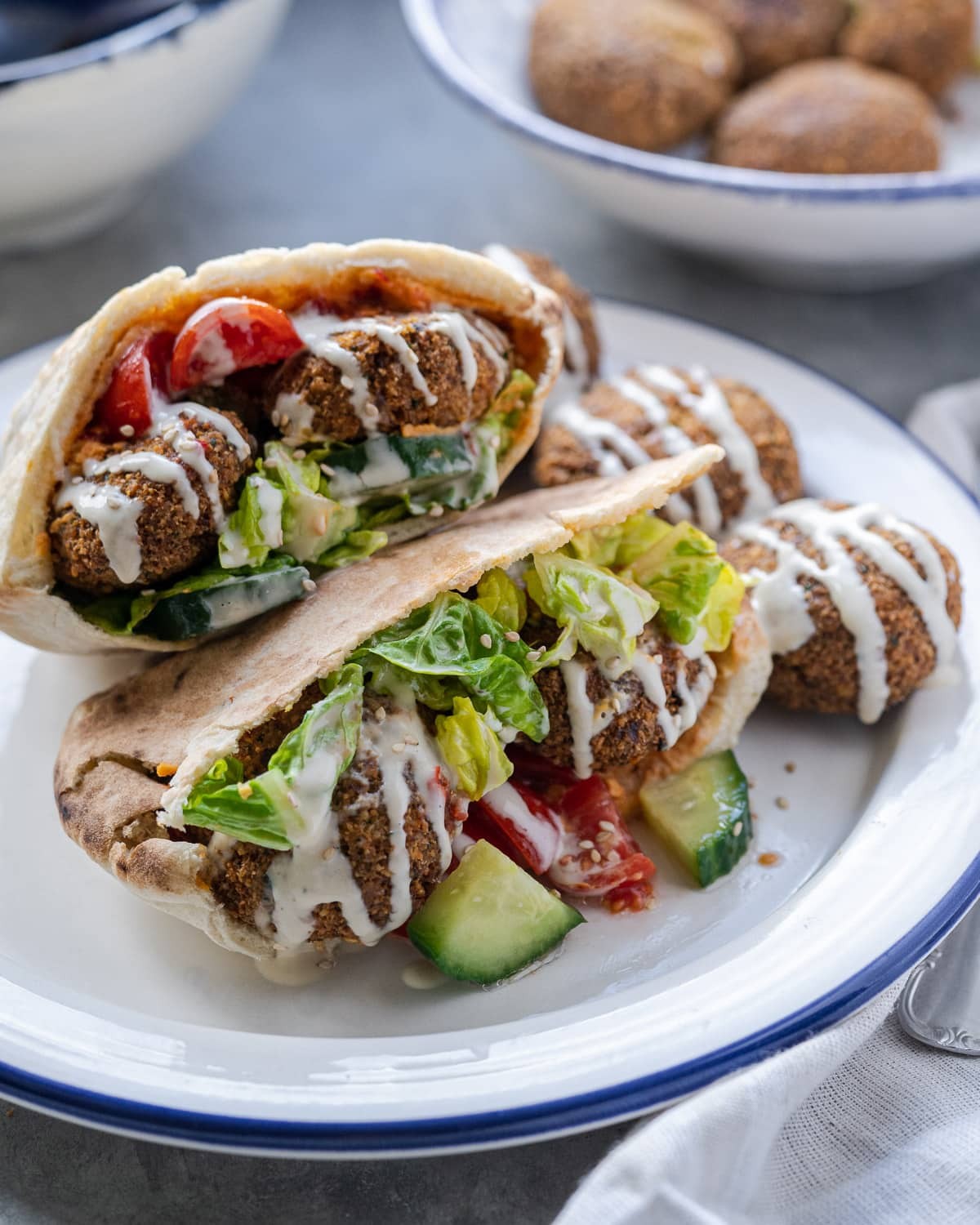 |
| Photo: Six Hungry Feet |
Falafel are deep-fried balls or patties made from chickpeas or fava beans, sometimes both, plus fresh herbs and spices. Falafel is a popular Middle Eastern street food sold from vendors or fast-casual spots in countries such as Egypt, Syria, Lebanon, Turkey and Israel, where it’s the national dish. Falafel is also a popular vegetarian and vegan food. It’s served in pita sandwiches with pickles, hot sauce, tahini and vegetables such as tomatoes, cucumbers and lettuce; as part of a mezze spread with other small plates such as hummus, tabbouleh and grape leaves; or paired with salad or as a side with hummus.
Falafel’s main ingredient are chickpeas, though it’s sometimes made with fava beans or a combination of the two. The chickpeas (and/or fava beans) are combined with fresh herbs such as parsley, cilantro and dill, spices including cumin, coriander and cayenne or crushed red-pepper flakes and aromatics such as onions, garlic and shallots. Many recipes also call for baking soda; since it’s a rising agent, it helps keep falafel from becoming dense and ensures a tender, almost fluffy interior.
Falafel is made by combining chickpeas, herbs, spices and aromatics in a food processor to create a mixture that’s formed into patties or balls and then either fried or baked. Frying falafel yields a crispier texture than baking.
For the best texture and structure, use dried chickpeas that have been soaked overnight (adding baking soda helps them to soften as they soak) and then drained. Though canned chickpeas work too, when they’re mixed with other ingredients and formed into patties, they tend not to hold their shape as well when fried. Some recipes that employ canned chickpeas call for an additional binding agent such as panko breadcrumbs or an egg. If you’re making a big batch of falafel and intend to freeze some, consider using dried chickpeas that have been soaked to ensure they hold their shape once thawed.
3. Poke, Hawaii
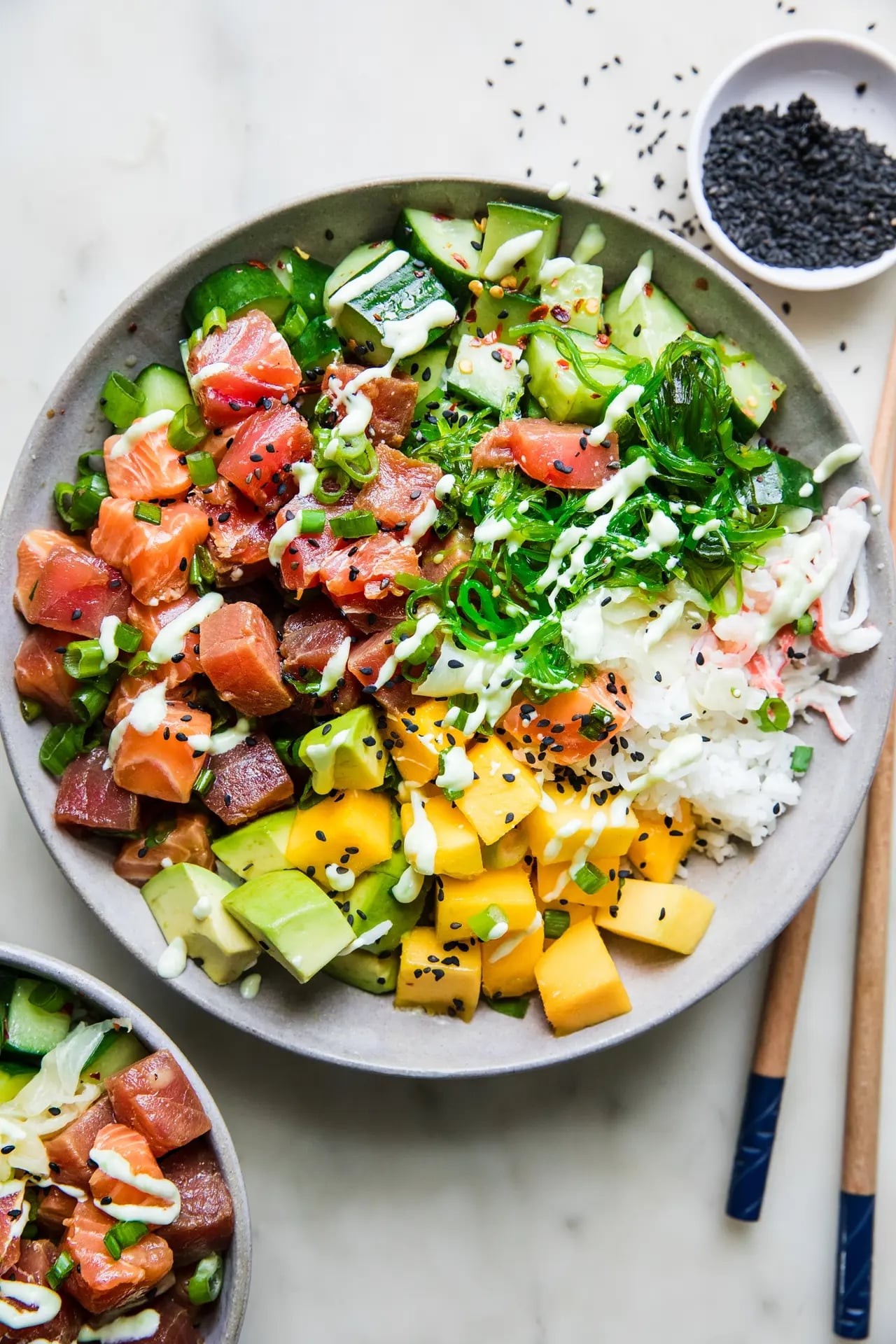 |
| Photo: The Mordern Proper |
Poke (Hawaiian for "to slice" or "cut crosswise into pieces"; sometimes anglicised as 'poké' to aid pronunciation) is diced raw fish served either as an appetizer or a main course and is one of the main dishes of Native Hawaiian cuisine. Traditional forms are aku (skipjack tuna) and heʻe (octopus). Heʻe poke is sometimes called tako poke in places where the Hawaiian language is not spoken. Poke differs from other raw fish dishes in that it does not use citrus fruits as a curing agent.
The traditional Hawaiian poke consists of fish that has been gutted, skinned, and deboned. It is served with traditional condiments such as Hawaiian sea salt, candlenut, seaweed, and limu. Traditional poke seasonings have been heavily influenced by Japanese and other Asian cuisines. These include soy sauce, green onions, and sesame oil. Others include furikake (mix of dried fish, sesame seeds, and dried seaweed), chopped dried or fresh chili pepper, limu (seaweed), sea salt, inamona (roasted, crushed and salted candlenut), fish eggs, wasabi, and Maui onions. Other variations of poke may include cured heʻe (octopus), other types of raw tuna, raw salmon and various kinds of shellfish.
Traditional Hawaiian poke may consist of cubed raw fish, maui onions, inamona, limu, soy sauce, green onions, or sesame oil.
4. Beef Stroganoff, Russia
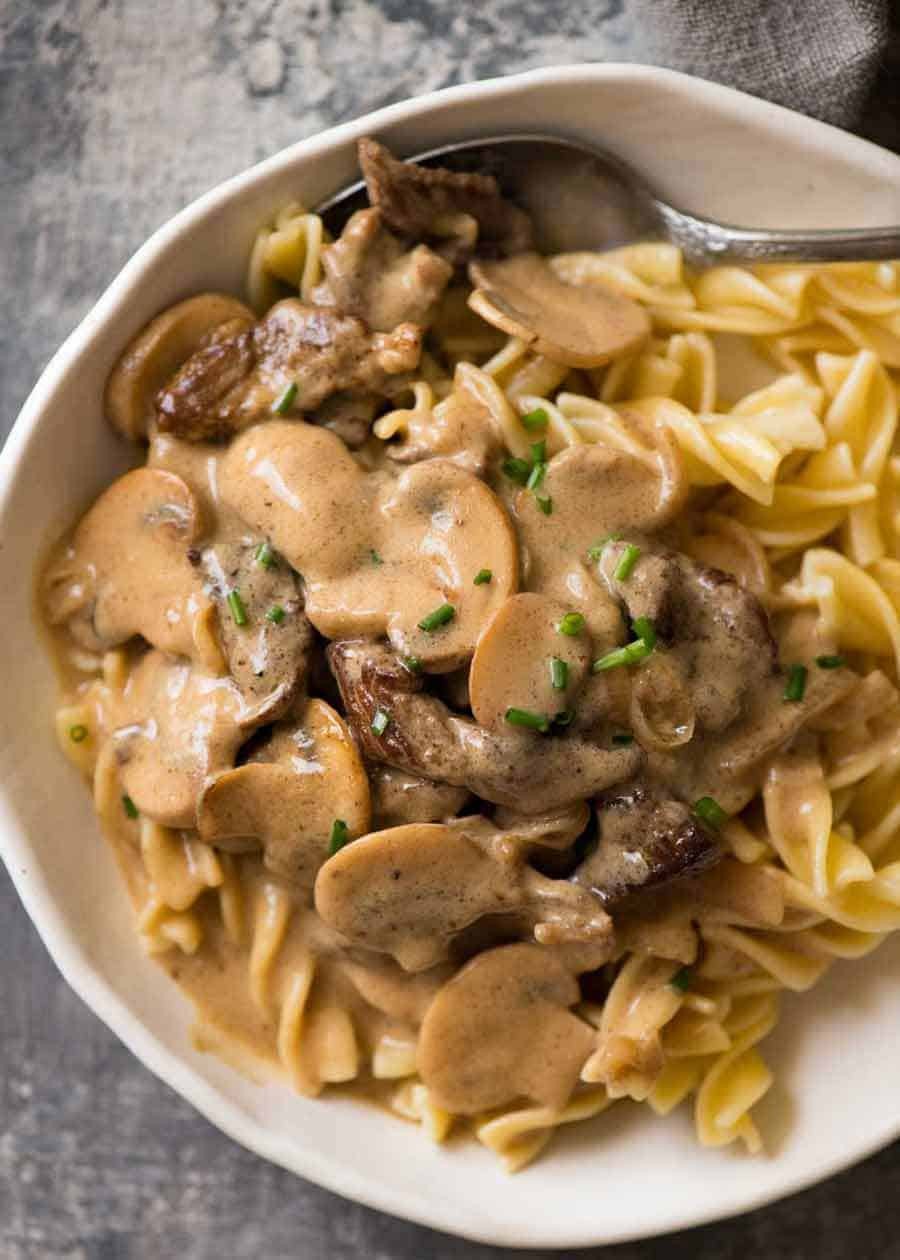 |
| Photo: RecipeTinEats |
Beef Stroganoff or Beef Stroganov is an originally Russian dish of sautéed pieces of beef served in a sauce of mustard and smetana (sour cream). From its origins in mid-19th-century Russia, it has become popular around the world, with considerable variation from the original recipe. Mushrooms are common in many variants.
Beef Stroganoff preparation varies significantly not only based on geography, but based on other factors as well, such as the cut of meat and seasonings selected. Meat for the dish can be cut in different ways and is sometimes diced, cubed, or cut into strips. Some variations include mushrooms and onions or other vegetables and varied seasonings such as sugar, salt, black pepper, and bottled marinades (especially Worcestershire sauce) and rubs.
In the version often prepared in the United States today in restaurants and hotels, it consists of strips of beef filet with a mushroom, onion, and sour cream sauce, and is served over rice or noodles. Today, the dish is generally served over wide or twisted egg noodles in the United States. British pubs usually serve a version of the dish with a creamy white wine sauce, whereas more "authentic" versions are often red stews with a scoop of sour cream separately served on top.
5. Dim Sum, China
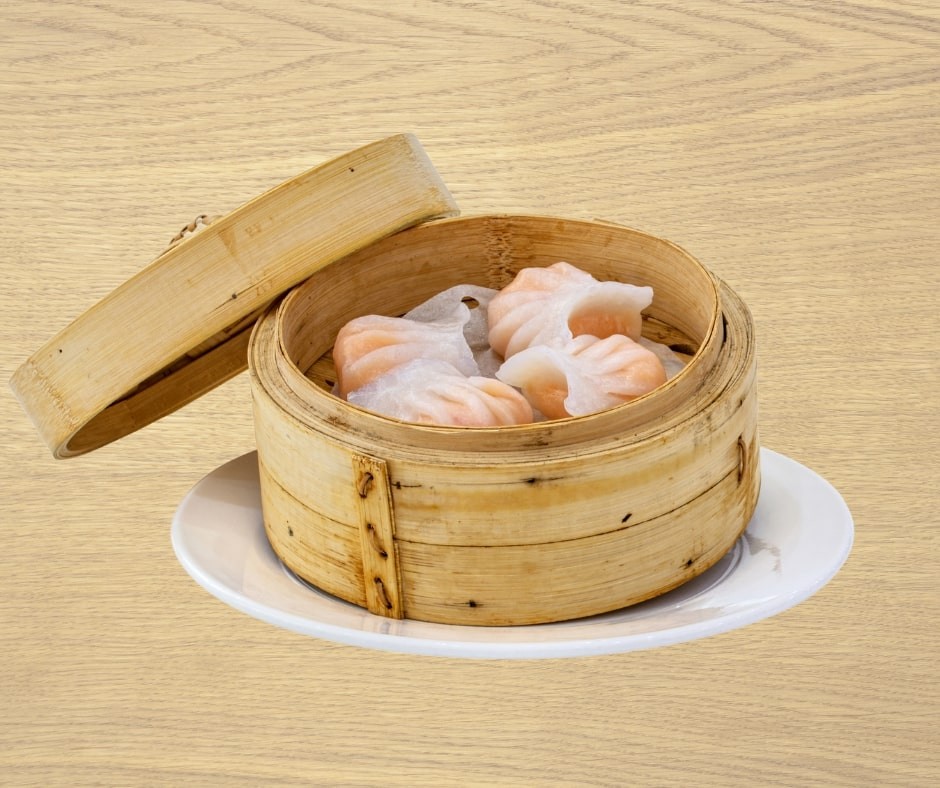 |
| Photo: Thedimsumcompany |
Dim sum is a traditional Chinese meal made up of small plates of dumplings and other snack dishes and is usually accompanied by tea. Similar to the way that the Spanish eat tapas, the dishes are shared among family and friends. Typically dim sum is consumed during brunch hours — late morning to lunchtime.
Nowadays, dim sum is eaten all over China and the world, but the dishes are believed to have originated in the southern China’s Guangdong region before eventually making their way to Hong Kong. According to food magazine Lucky Peach, Cantonese dim sum culture began in tearooms in the latter half of the 19th century in the port city of Guangzhou, the capital of Guangdong, after opium dens were banned throughout the country. Silk Road travelers and traders would take breaks in tea houses for a dim sum meal. As they continued to travel, the practice continued to spread and gained popularity throughout the region, especially in Hong Kong.
Nowadays, dim sum can include dishes and traditions adopted from other parts of China. But by and large, the culinary form remains the same as ever.
6. Rendang, Indonesia
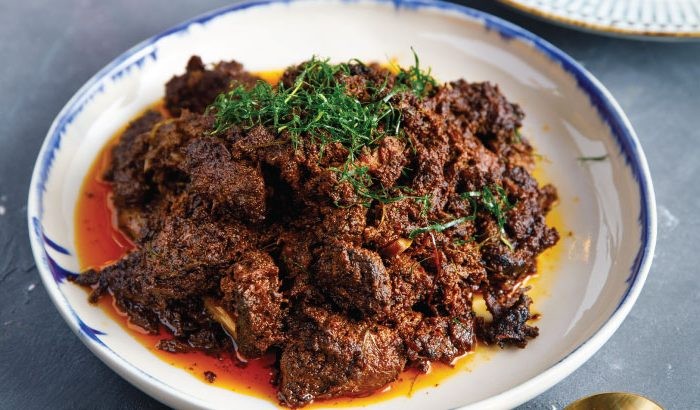 |
| Photo: Ben's Independent Grocer |
Rendang is a Minang dish originating from the Minangkabau region in West Sumatra, Indonesia. It has spread across Indonesian cuisine to the cuisines of neighbouring Southeast Asian countries such as Malaysia, Singapore, Brunei and the Philippines. Rendang is often described as a rich dish of meat — most commonly beef (rendang daging) — that has been slow cooked and braised in a coconut milk seasoned with a herb and spice mixture, until the liquids evaporate and the meat turns dark brown and tender, becoming caramelized and infused with rich flavours.
As the signature dish of Minangkabau culture, rendang is traditionally served at ceremonial occasions to honour guests during festive events; such as wedding feasts and Lebaran or Hari Raya (Indonesian popular words for both Eid al-Fitr and Eid al-Adha). Rendang is also traditionally served among the Malay community in Indonesia, Malaysia, Singapore and Brunei, as well as the Maranao in the Philippines.
Rendang is officially recognised as one of Indonesia's national dishes. Six types of rendang preparations have also been designated as intangible cultural heritage by the Indonesian Ministry of Education and Culture.
7. Sushi, Japan
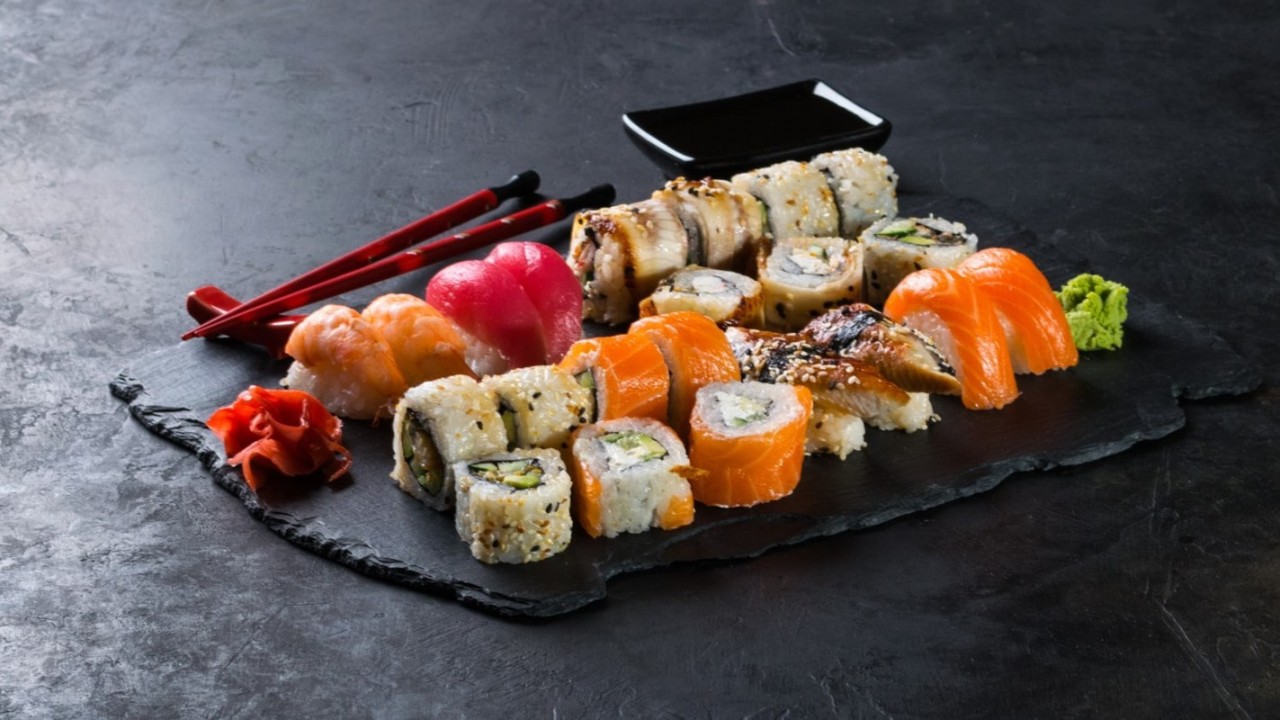 |
| Photo: Foody |
Sushi is a Japanese dish of prepared vinegared rice (鮨飯, sushi-meshi), usually with some sugar and salt, accompanied by a variety of ingredients (ねた, neta), such as seafood, often raw, and vegetables. Styles of sushi and its presentation vary widely, but the one key ingredient is "sushi rice", also referred to as shari (しゃり), or sumeshi (酢飯, "vinegared rice").
The inventor of modern sushi is believed to be Hanaya Yohei, who invented nigiri-zushi, a type of sushi most known today, in which seafood is placed on hand-pressed vinegared rice, around 1824 in the Edo period (1603-1867). It was the fast food of the chōnin class in the Edo period.
Sushi is traditionally made with medium-grain white rice, though it can be prepared with brown rice or short-grain rice. It is very often prepared with seafood, such as squid, eel, yellowtail, salmon, tuna or imitation crab meat. Many types of sushi are vegetarian. It is often served with pickled ginger (gari), wasabi, and soy sauce. Daikon radish or pickled daikon (takuan) are popular garnishes for the dish.
Sushi is sometimes confused with sashimi, a related dish in Japanese cuisine that consists of thinly sliced raw fish or occasionally meat.
8. Pho, Vietnam
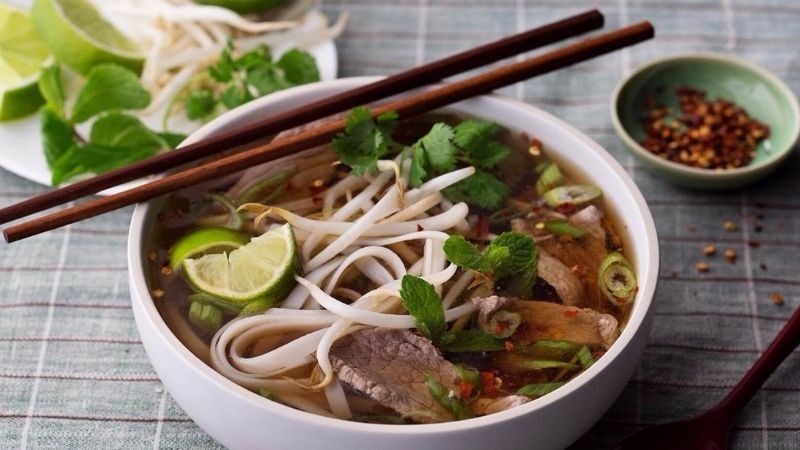 |
| Photo: BachhoaXanh |
Pho, pronounced "fuh," is a Vietnamese soup that is normally made with a bone-beef broth, banh pho noodles, and thinly sliced beef, that's often served with bean sprouts and other fresh herbs on the side. Not to be confused with Japanese ramen, which is usually made with wheat noodles, pho is made with rice noodles. It is important to note that there are many variations of pho. The most common is pho nam, which originates in Southern Vietnam, and pho bac, which is from Northern Vietnam and considered to be the original pho.
According to Cuong Hyunh, creator of lovingpho.com, it is believed that pho originates in the Nam Dinh and Hanoi regions of North Vietnam after the French colonization of the country in the late 1880s. It is believed that the word "pho" comes from the French word "feu," meaning fire, and could possibly be a Vietnamese take on the French dish pot au feu. Pho bac, the original pho, is made by boiling beef bones for several days and has a heavy emphasis on the delicate and simple broth. The broth is accompanied only by rice noodles and and thinly sliced beef. After the second world war, many people from North Vietnam moved to South Vietnam to escape the communist rule of the North. This led to the creation of pho nam. Pho nam is usually made with a broth that is seasoned with many spices and heavily garnished with fresh herbs such as bean sprouts, basil, and cilantro. Pho nam became popular in southern Vietnam and is still commonly sold by street vendors due to its convenience. After the fall of Saigon at the end of the Vietnamese conflict, many people of the South fled to various parts of the world, allowing the spread pho along with other Vietnamese dishes. Pho is now easily found in many places of the world and is very popular on social media.
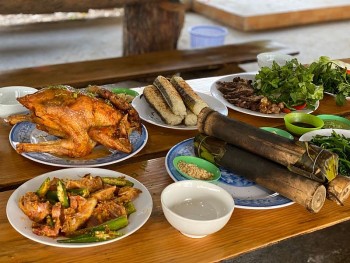 | Famous Rice Dishes Across Vietnam Rice is an irreplaceable part of Vietnamese cuisine. Roasted or steamed, main course or snack, we had it all!. |
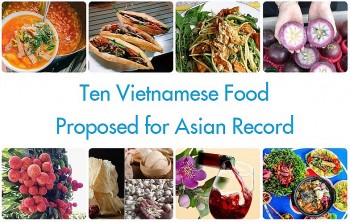 | What are the 10 Special Dishes of Vietnam? Vietnam Record Association (VietKings) has just sent an application to the Asian Record, asking to set an Asian record for 10 specialty dishes of Vietnam. |
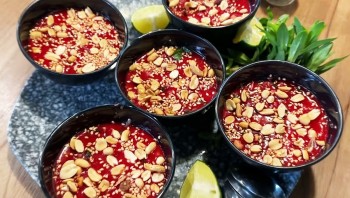 | 7 Weird Vietnamese Dishes That Challenge The Bravest Foodies While a heaven for foodies, Vietnam also has numerous exotic plates that will amaze foreign tourists, and challenge the bravest hearts. Despite their unusual appearances, ... |
Recommended
 World
World
Pakistan NCRC report explores emerging child rights issues
 World
World
"India has right to defend herself against terror," says German Foreign Minister, endorses Op Sindoor
 World
World
‘We stand with India’: Japan, UAE back New Delhi over its global outreach against terror
 World
World
'Action Was Entirely Justifiable': Former US NSA John Bolton Backs India's Right After Pahalgam Attack
 World
World
US, China Conclude Trade Talks with Positive Outcome
 World
World
Nifty, Sensex jumped more than 2% in opening as India-Pakistan tensions ease
 World
World
Easing of US-China Tariffs: Markets React Positively, Experts Remain Cautious
 World
World


